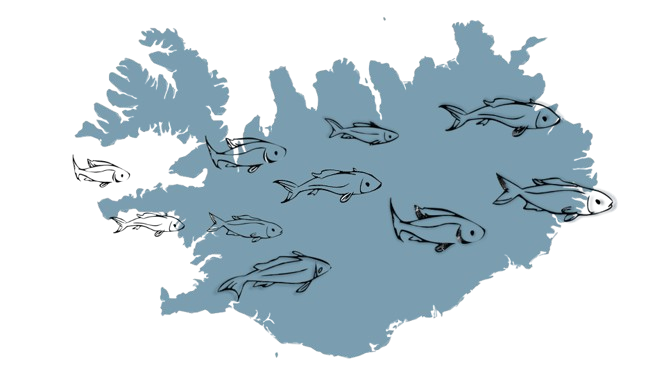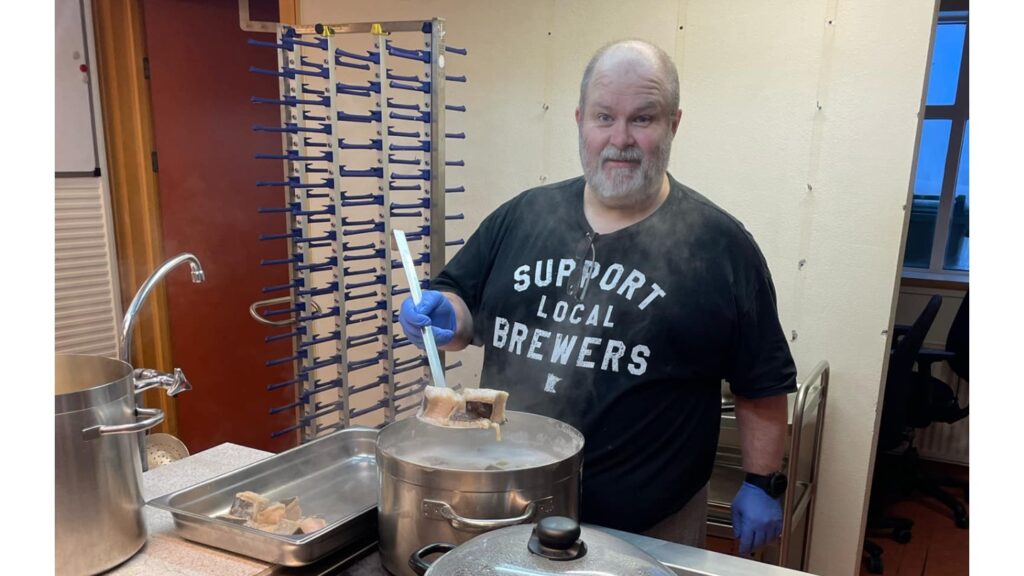Tracking Arctic charr in Thingvallavatn
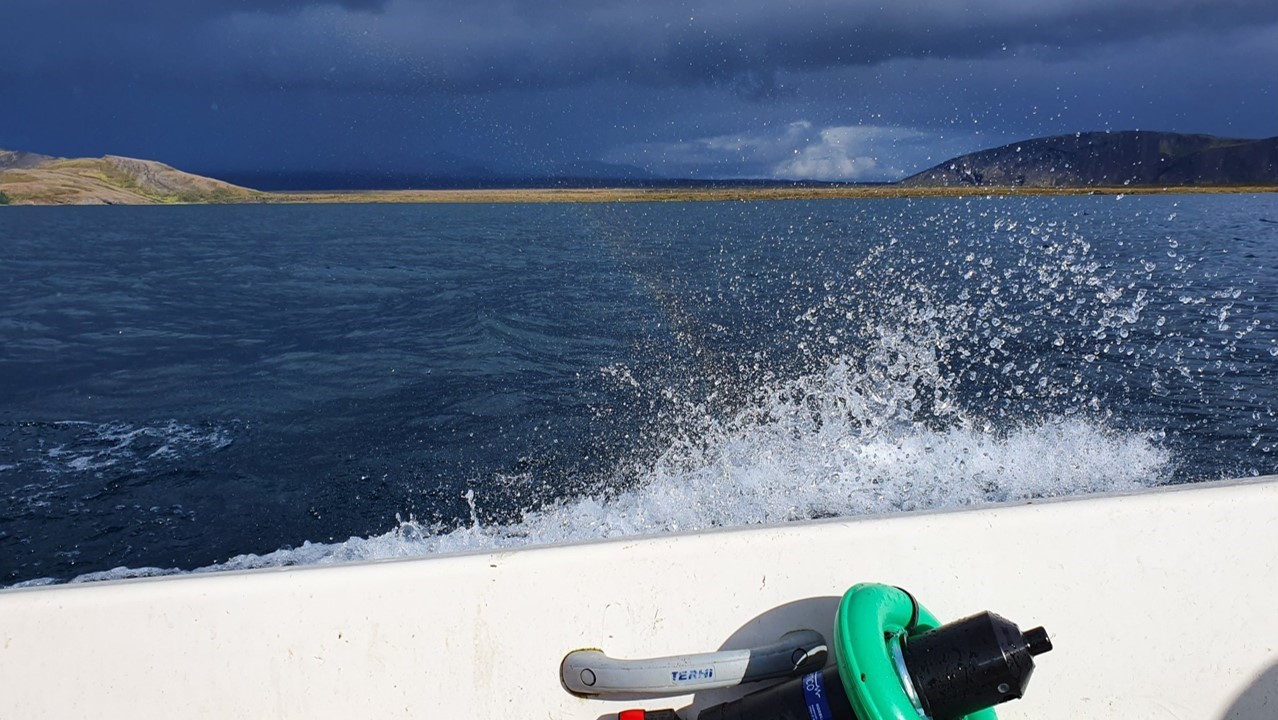
While research on Arctic charr (“bleikja”) in Thingvallavatn has been going on for decades (and the earliest studies even going back to the early 1900s!), a lot of knowledge on their behaviour is unknown. This is because getting information on fish behaviour in their natural environment is very hard. It is way easier to get information on fish by catching them in nets or doing experiments in a lab but that doesn’t give the full picture of when and where the fish are swimming in the lake.
But there is a way to track fish in their waters without disturbing them. The technology is called acoustic telemetry (watch this video for more information). What it does: a tag is inserted into a fish and this tag sends out signals to receivers that are put in the water all around the lake (Thingvallavatn in this case). The signal gets then registered on the receiver so we know exactly when a particular fish is swimming close to a receiver. By having receivers all around the lake we know where each tagged fish is swimming and at what time.
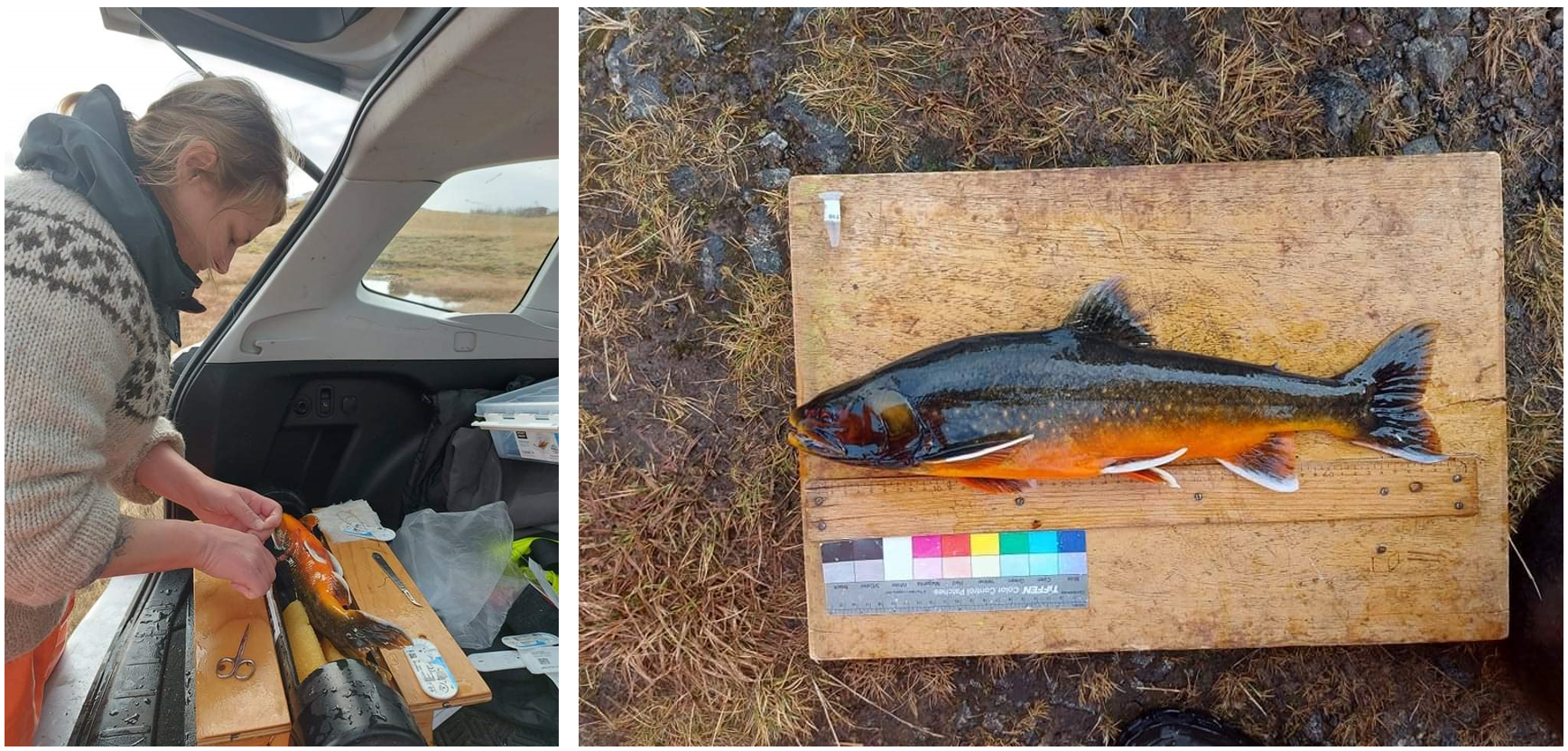
Right: after tagging we take a picture, weight, length and a genetic sample to have all possible information on the fish we are tracking.
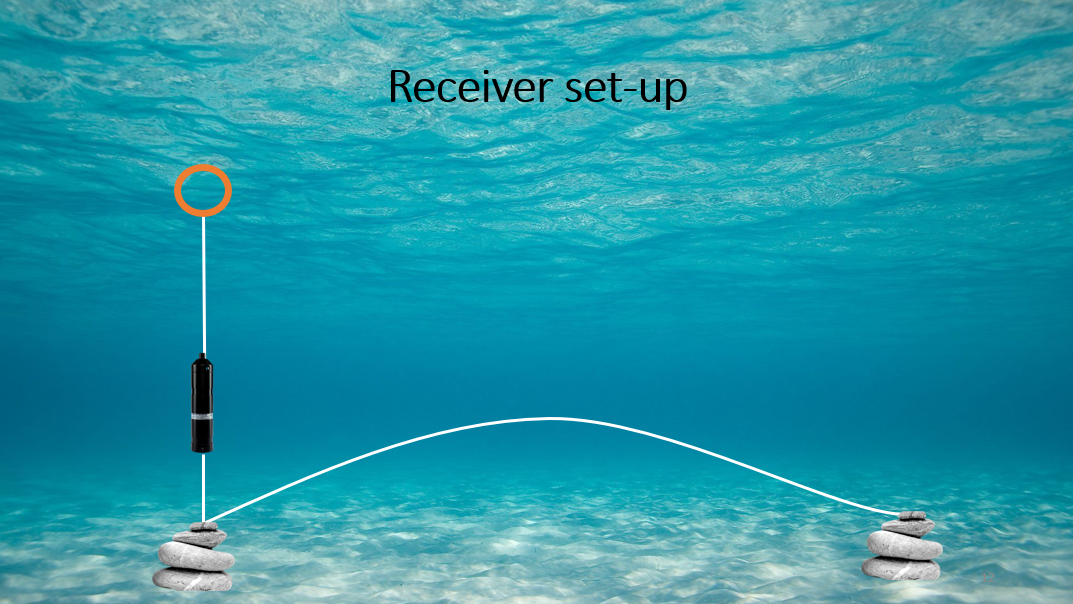
In the summer of 2021 we put 38 receivers in the lake (see map below) and tagged 60 Arctic charr. These fish were followed throughout the lake for as long the batteries in the tags last (ranging from 4 months for small tags to several years for bigger tags).
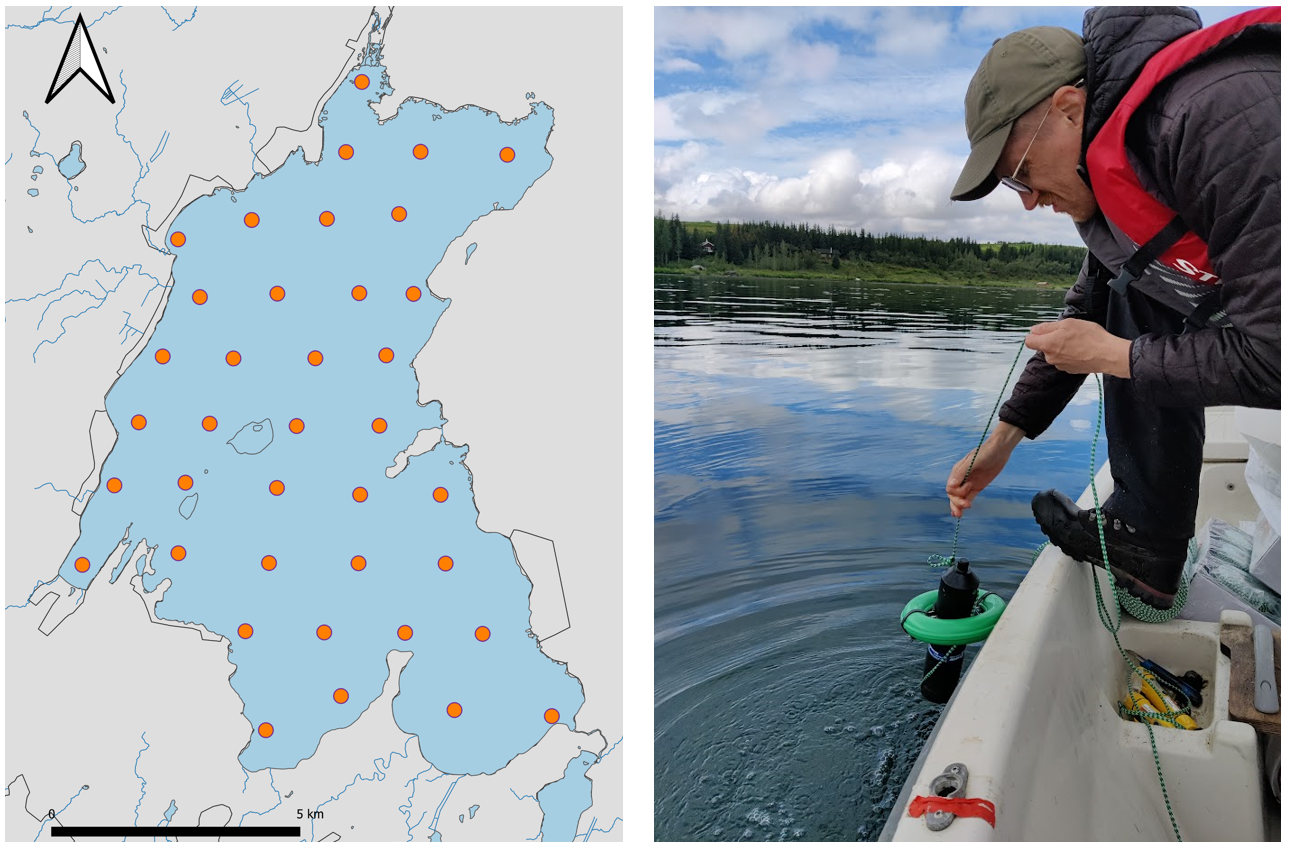
Right: Gustav Hellström, professor at the Agricultural University in Sweden, is putting an acoustic receiver into Thingvallavatn.
n the summer of 2022 we set out to find all the receivers and download the data that had been recorded over the last year. We have GPS coordinates of where the receivers are located and a buoy just under the water surface, but sometimes it still takes a while to find them. After dragging the receiver up, the data could be downloaded using a computer.
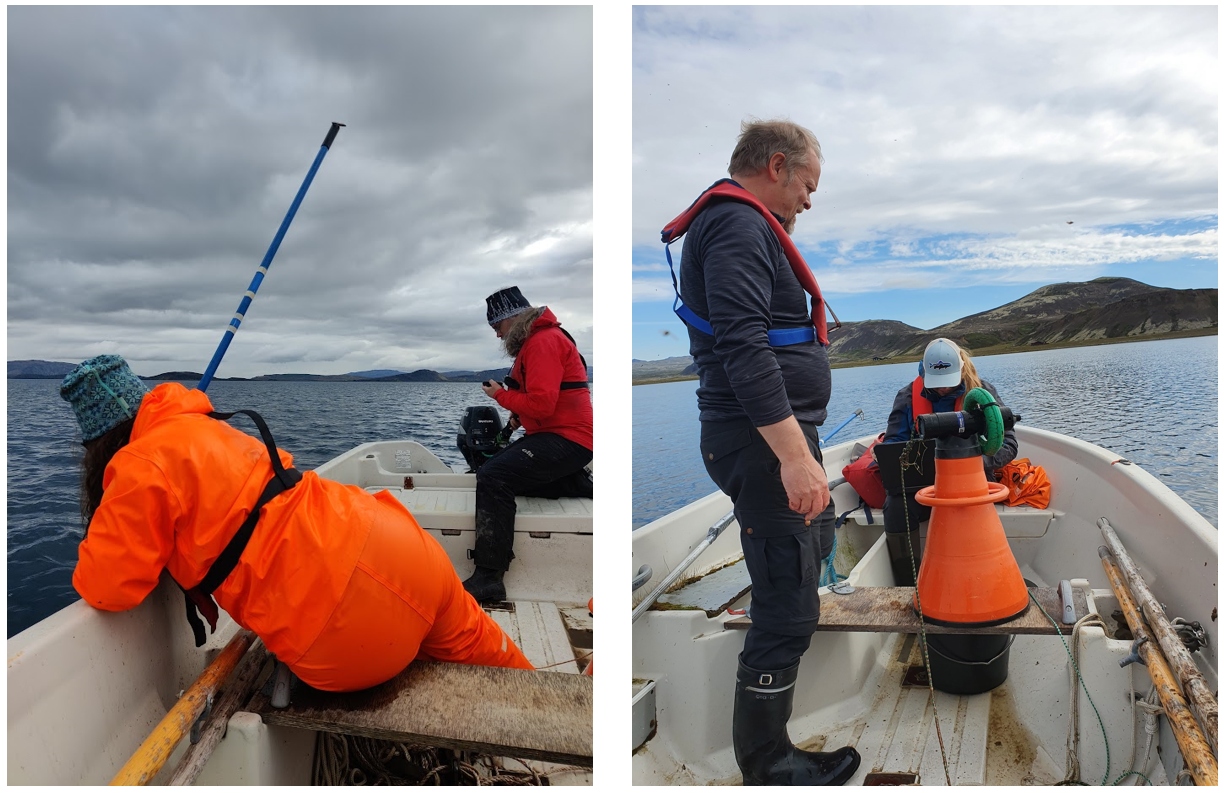
Right: I am offloading the data from the receiver using a computer while Finnur Ingimarsson supervises.
At the moment I am analysing the data to see where the Arctic charr are throughout the year, so stay tuned for that in the future!
